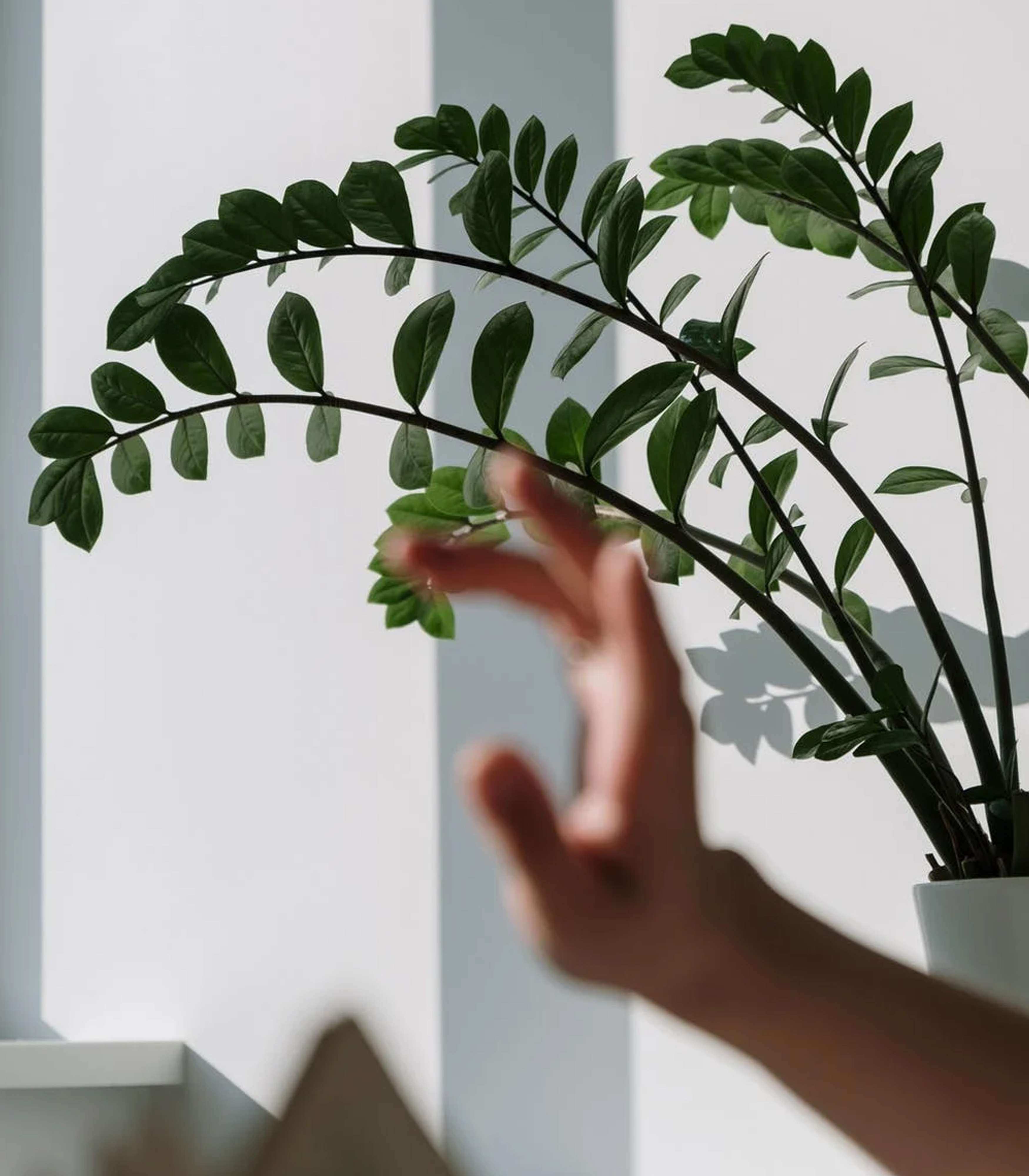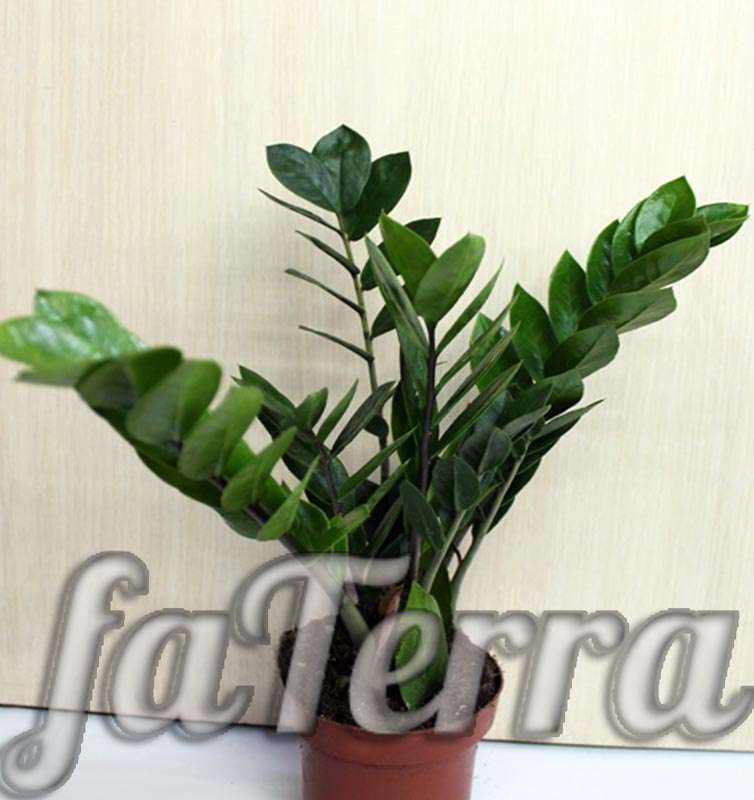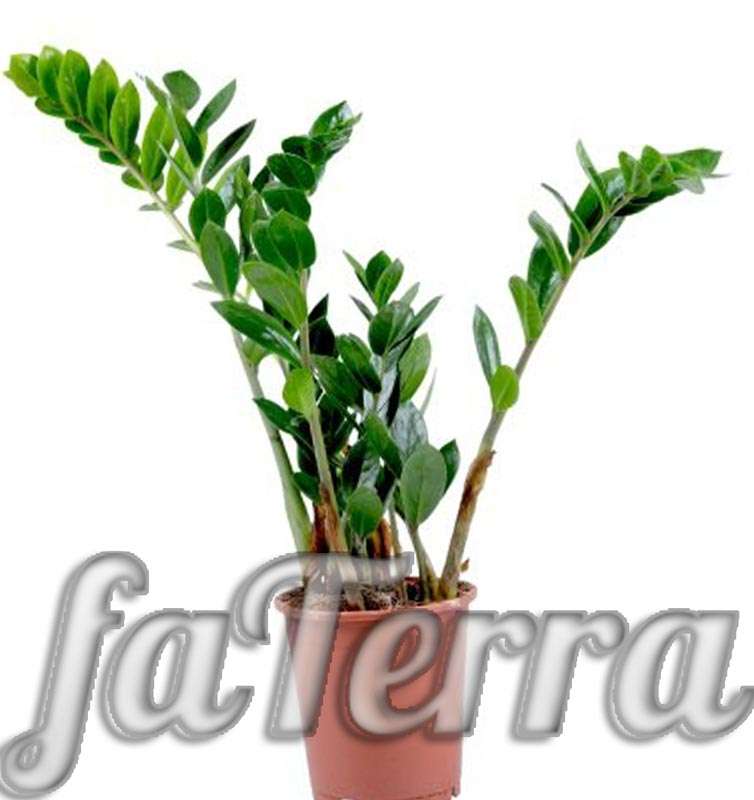Latin name: zamioculcas
Category: herbaceous succulent plants
Origin: Africa
Zamioculcas brief information
Zamioculkas is a beautiful, evergreen succulent with dark green fleshy leaves. The Zamioculcas flower considers the boundless deserts of Africa to be its native places. The Zamioculcas plant was described in 1829 by Conrad Loddijs, a well-known tropical plant collector and founder of the exotic plant nursery. In 1856, the Austrian botanist Heinrich Wilhem Schott singled out Caladium zamiedista as a separate genus called Zamioculcas Loddiges. And since 1908, the name of this beautiful flower Zamiokulkas zamielifolia was introduced for the first time by the director of the Berlin Botanical Garden Adolf Engler.
This is how this succulent is now called by professional gardeners, and its rating as a houseplant can be judged by numerous popular names, caused by the general appearance, occurrence, or signs associated with this flower.
Not a single plant has such a number of names: the Zanzibar pearl, the eternal tree or the fat man, the Aroid palm, the Money (Dollar) tree, in China the Golden tree, the Chinese New Year holiday plant, female happiness.
An unpretentious impressive deciduous ornamental plant in the microclimate of the natural environment grows in forest lowlands, rocky areas, sunny pastures and on very poor, waterless, sandy soils. The unusualness of Zamioculcas in an underground stem, called a tuber-rhizome, from which four or six pinnate dark green, glossy, waxy, erect leaves grow, up to one meter in size. The zamiokulkas flower perfectly adapts both to natural habitat conditions, it grows so well even in the mode of not bright illumination of our apartments.
Zamioculcas is poisonous, but not the whole plant, but only its leaves.
Zamioculcas varieties and its individual characteristics
Zamioculcas zamielifolia (Zamioculcac zamiifolia)
This species is native to East Africa. Like other succulents that grow in vast desert areas, this slow-growing plant stores moisture in its thick, fleshy stems, roots and leaves for use in drought.
A distinctive feature of zamiokulkas zamiyelistny is the presence of a powerful underground tuber. Its flowers are inconspicuous small, light cream or white, collected in a modest, inconspicuous cob, not distinguished by particular beauty, which is most often located at the bottom of the plant and is hidden by a green leafy coverlet. The rare flowering of Zamioculcas in a rather advanced period of growth indicates even more its modesty and originality.
Zamioculcas lanceolate (Zamioculcas lanceolata Peter)
A well-known botanist and director of the Botanical Garden of Göttingen described Zamioculcas lanceolate, which grows in most cases in Mozambique. Currently, it is rarely distinguished as an independent species. A herbaceous succulent plant with glossy, compound pinnate, dark green leaf blades that are more lanceolate in shape. Swollen meter-long leaves grow from a thick tuberous rhizome, form an original, peculiar evergreen plant, but shedding leaves during a long drought.
Zamioculcas Boivin (Zamioculcas boivinii Decne)
Zamioculcas Boivin is a very interesting variety of plant. In the natural nature of the mountain forests of East Africa, this succulent grows, which was first described by botanists in 1870. At this stage, in relation to the modern classification, another genus of the aroid family was identified for this flower. And now it is called Gonatopus boivinii. As a cultivated plant, it was bred quite recently and amateur growers use its botanical appearance. Nevertheless, the rating of this domestic plant is growing, which activates the creation of new original cultural forms by breeding methods.
Zamioculcas home care
The grace, grace and unpretentiousness of indoor zamiokulkas makes it a frequent resident of city apartments. After all, the microclimate created by central heating is very close to deserts. For successful breeding, certain rules must be observed, based on the biology of the plant species, as well as its adaptation to the conditions of existence.
Indoor flower zamiokulkas has a positive attitude to heat with a range of the most optimal temperatures: in summer - from 19 to 24 degrees, in winter from 17 to 20 degrees, bright diffused lighting, and watering should be moderate to the extent that the earthy coma dries out. During the period of summer heat, it is advisable to take out the houseplant to the balcony.
Zamioculcas reproduction
- The most acceptable way to propagate Zamioculcas is vegetatively, using any part of the plant.
- One of the easiest ways to propagate is by dividing the bush.
- The second way is to separate a complex leaf-branch with a kidney, dry it a little and determine a suitable pot.
- The third longest method of propagation up to six months is leaf propagation, which is dried a little for a couple of days before planting, and then planted in a suitable container, watered, covered with a transparent container, and periodically aired.
Zamioculcas transplantation is carried out in the spring, preferably at intervals of two years, in a pot corresponding to the volume of the roots, in well-drained nutrient soil.
Pests and diseases of Zamioculcas
The Zamioculcas dollar tree is an extremely hardy plant and rarely gets sick from pests unless over-watered.
However, Zamioculcas disease can arise from damage by a spider mite, less often by a mealybug or shield aphid. To prevent the disease, the plant must be regularly examined and preventive measures used. When parasites appear on a plant, it is necessary to immediately take measures to destroy them, first mechanically with a soapy solution, a weak tobacco infusion. And if this is not enough, urgently treat it with ready-made chemistry preparations.



















Write comments
Comments